“Cocaine Bear” VFX Supervisor Robin Hollander on Creating an Ursine Junkie
Cocaine Bear began snorting up viral eyeballs last fall, boosted by a madcap trailer that racked up 18 million views. Now boasting a $28 million opening weekend, second only to M3GAN as 2023’s biggest non-franchise hit, it’s based on the true story of a black bear who discovered a duffel bag of cocaine in the Georgia woods. Directed by Elizabeth Banks, Cocaine Bear features human stars Keri Russell, Alden Ehrenreich and Isiah Whitlock Jr., but the main attraction, nicknamed “Cokey,” owes its CGI existence to the New Zealand-based Wētā FX team led by visual effects supervisor Robin Hollander.
Joined by some 150 artisans, Hollander spent two years perfecting a computer-generated bear that has now entered the pantheon of weirdly irresistible comedy horror creatures. Hollander, who previously worked on the Planet of the Apes trilogy and Avatar, remembers attending a sneak preview screening in November. “People in the audience were losing their minds! It’s not going to change the world, but this is something I think people need right now. Ultimately, that’s what movies are: an escape into shiny green pastures — only our pasture is laced with cocaine and blood!”
In Los Angeles recently for Cocaine Bear‘s Hollywood premiere, Hollander checked in with The Credits to talk about hair count, sun bears and the magic of a well-made “stuffy.”
What were the steps involved in building the star of Cocaine Bear in all her detailed splendor?
In all her gory glory? It started with the first call we got from Elizabeth Banks. One of her mandates was that if this bear isn’t photoreal, the whole thing falls apart. She was very clear that the bear is not stylized, it’s not a cartoon, it can’t look like bad taxidermy every time she comes on stage.
But there’s a lot of trial and error before you get to “photoreal,” right?
Yes. We spent two years and nine days working on this. Liz had some experience with CGI on Charlie’s Angels but this is her first time, I think, building a creature. We showed her examples from other movies where the final result looks amazing, but we needed her to understand: it’s a long road to get there, with many iterations. As we were chipping away and making the nuances of Cokey come alive, we would show Liz stuff that looked a little rough, like a doodle on a napkin, and if she didn’t like it, then we’d pull the plug and not waste time. It was very efficient.
What steps were involved in building Cokey?
We built a model standing on all fours in the “rest pose” — no animation, no expression. Once we had that base model, our creatures department put in joints and restraints, which is called the puppet. Then the animation department goes into the puppet and animates each limb. Our facial model department works with the lip puller and the nose wrinkler and the eyes squasher, all sorts of stuff like that. In order to get the performance our animation supervisor needed, there was a lot of back and forth. The puppet is also used by the creatures department to do all the simulations controlling how the fat under the fur bounces and contracts and expands in order to make the fur shake and jiggle. All of that is fed into the puppet.
Cokey’s face looks so convincing, even in close-ups. How did you achieve that level of detail?
We had the bear looking incredible in shots that were middle ground or background. As post [production] progressed and we got closer up to Cokey in the third act, we took another look at her face. She looked too bristle-y, almost like a brush, so we decided to up the fur count from about half a million to about four million, from her snout to her ears. Instead of one strand, you now have eight. We we were able to make each strand finer and taper them off, which results in smoother, more organic-looking hair.
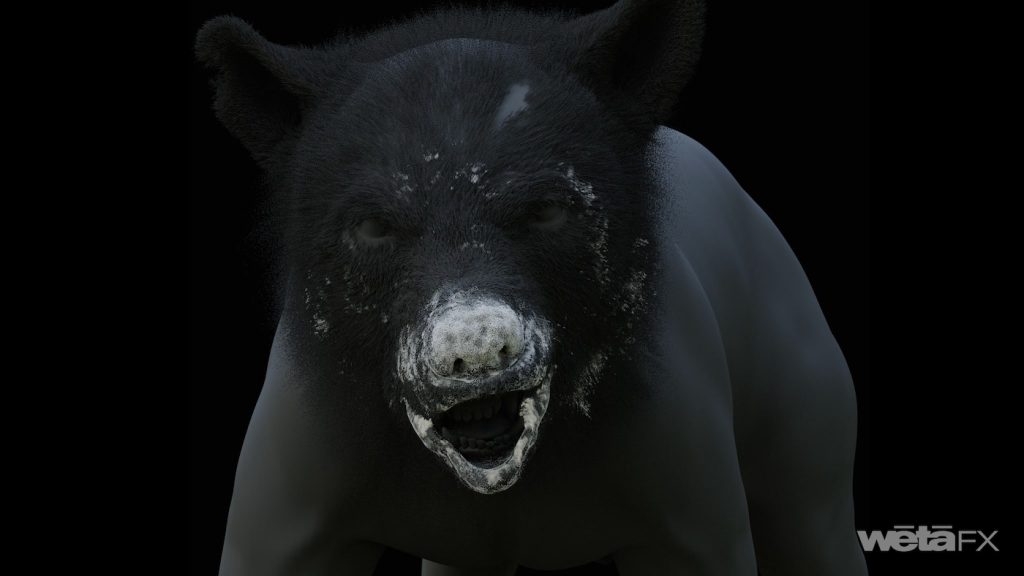
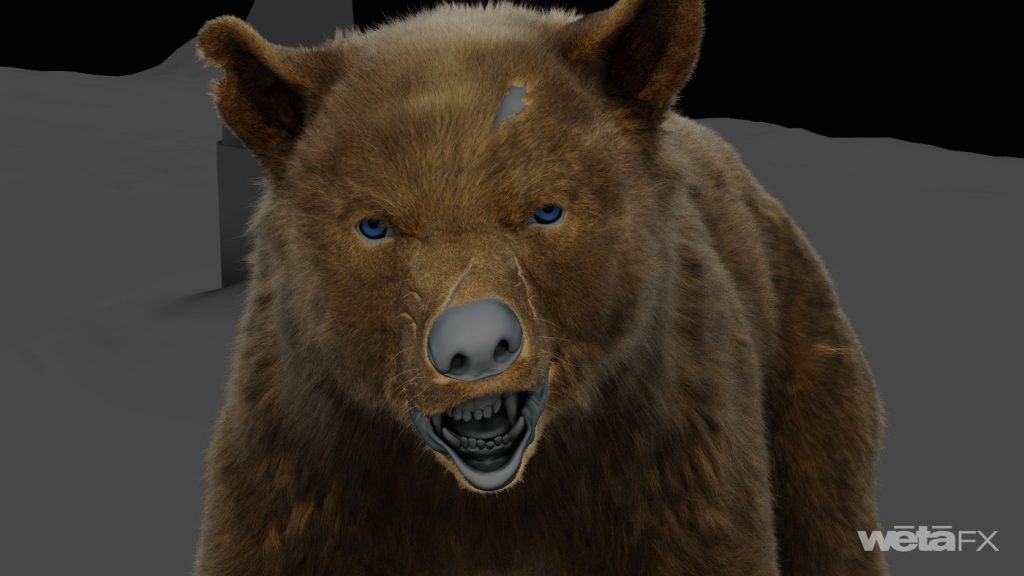
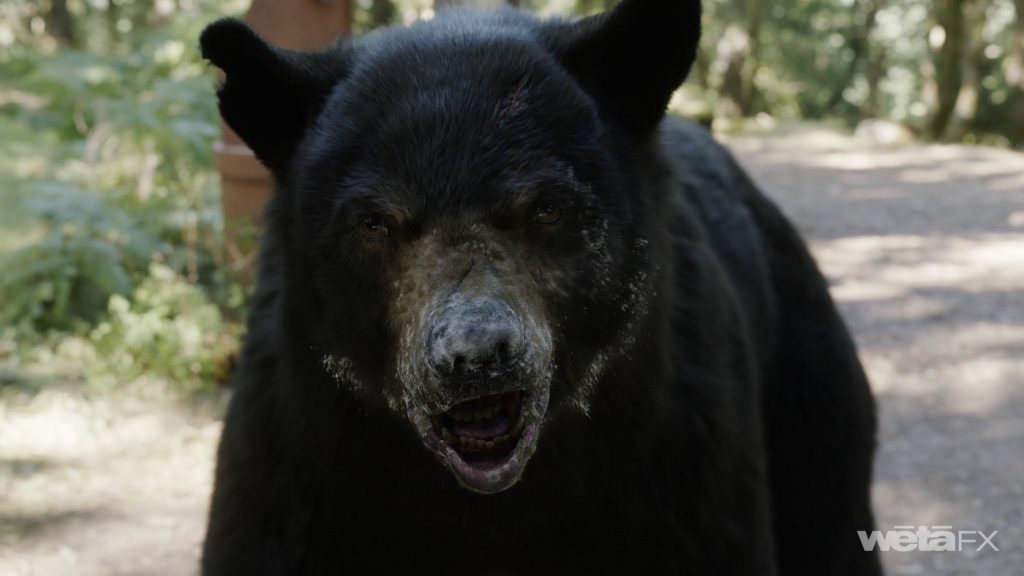
You worked previously on three Planet of the Apes sequels that used motion capture of human actors, who were then digitally enhanced to look like apes. Did you consider performance capture for Cocaine Bear?
The Apes trilogy lent itself to motion capture because you can transfer somewhat easily from people to apes. You can’t do that with a black bear anatomically just because the gaze and the walk cycle are so different. We decided early on that it’s not worth the hassle of doing performance capture. Instead, we had an amazing artist named Allan Henry on set.
Allan Henry acted out the bear’s behavior?
Yeah. He could stare at the actor and smile and make grunting noises. We also had Wētā Workshop build this amazing life-size bear — we called it a stuffy — which gave us a really good reference for how fur reacts under different lighting conditions and helped the DP frame shots. Most importantly, the stuffy gave our actors the opportunity to get psyched out by the bear. There was a sweet moment on set where I remember seeing Isiah Whitlock off to the side looking at the stuffy, sort of peering into his eyes, almost like two actors getting acquainted and having a chat between scenes.
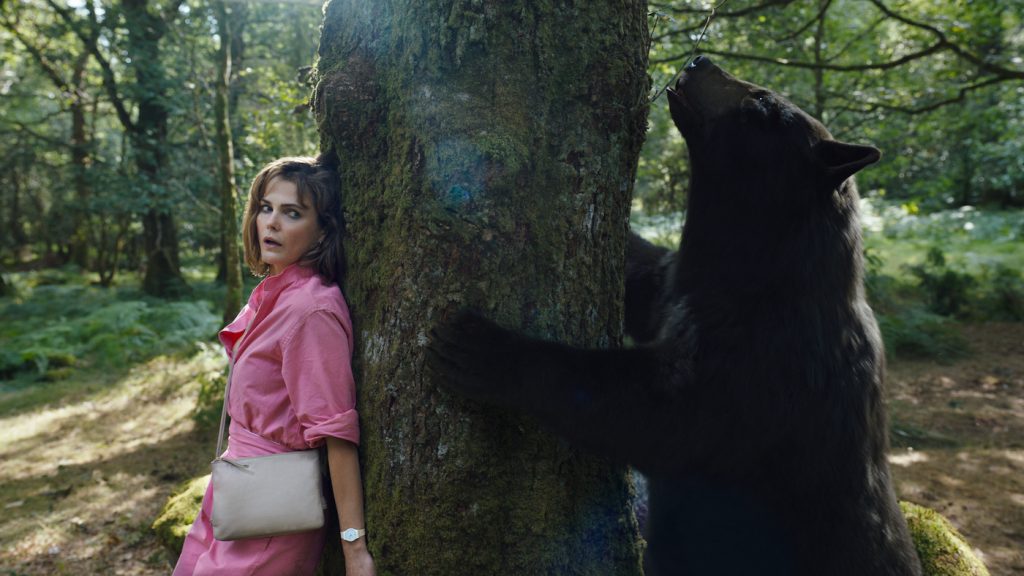
You’re based in New Zealand. How did you coordinate the CGI work with Elizabeth Banks?
We’d do virtual review sessions every week and send hi-res files that they could cut into the AVID. It was nice to have direct input from the filmmaker because, usually, you’re dealing with a client-side supervisor. That makes sense on a big show with multiple vendors. But for this one, it was refreshing to get a message from Liz’s husband, Max Handelman, when he’d forward me an Instagram post of a bear doing something funny. We’d flesh it out and say, “Here’s what we did with that link you sent over.” It was more like sending messages to a friend.
As you mentioned earlier, Elizabeth Banks needed a photoreal hero bear. What were some of the real-world references that inspired Cokey’s behavior?
We showed Liz footage of sun bears because they just looked naturally coked up.
Sun bears?
Sun bears. If you go on YouTube and look them up, you’ll see what I mean. Their eyes roll around in their heads, and the tongue lolls out. They’re incredibly ferocious and make really weird facial shapes if they want to get into a coconut or a bag of food or something. When we saw the footage, we said, “Surely this is what a bear would look like on coke.”
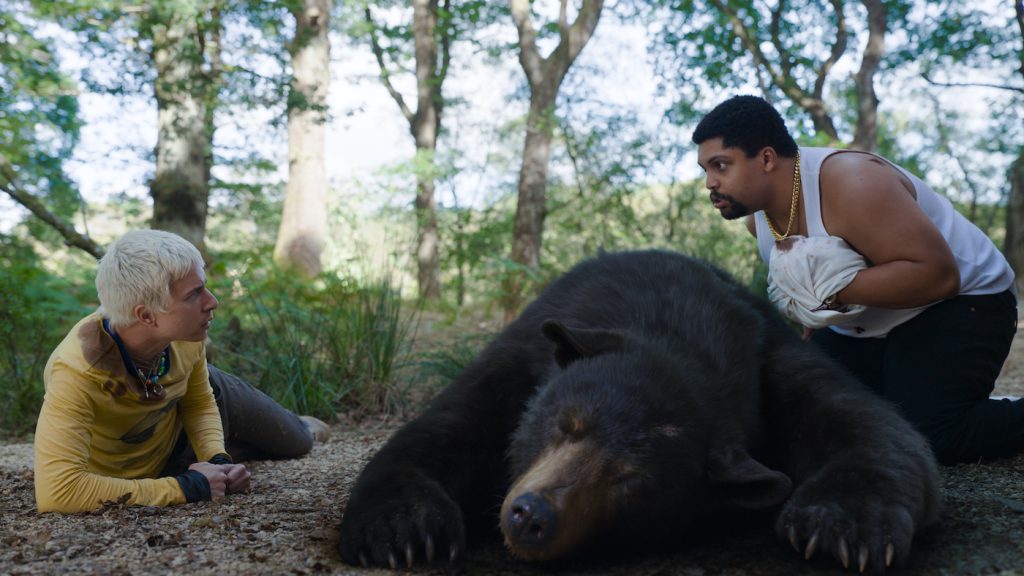
Anything else?
The Revenant, of course, gets referenced a lot when you talk about bears in movies so we wanted to build on that. The thing is, the back knees [of The Revenant bear] felt quite bent and we found that when Cokey had bent back knees, she just looked like a fat dog, limping. So we gave Cokey peg legs, basically, having seen footage of black bears taking long steps with straight legs where it almost looked like they were dragging them.
Does Cokey sometimes stretch the limits of what a bear could physically accomplish in real life?
Well, the ambulance chase — people say that would never happen, but black bears run up to 35 miles an hour. The ambulance isn’t going that fast on a winding road, so in our minds, a normal black bear could keep up; plus, she’s on coke, so let’s take it to the nines.
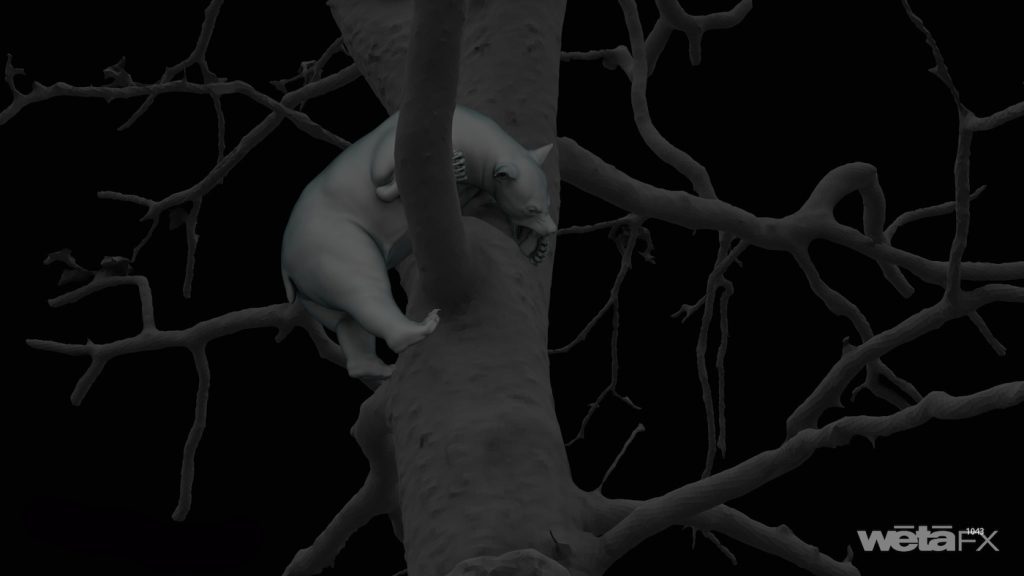
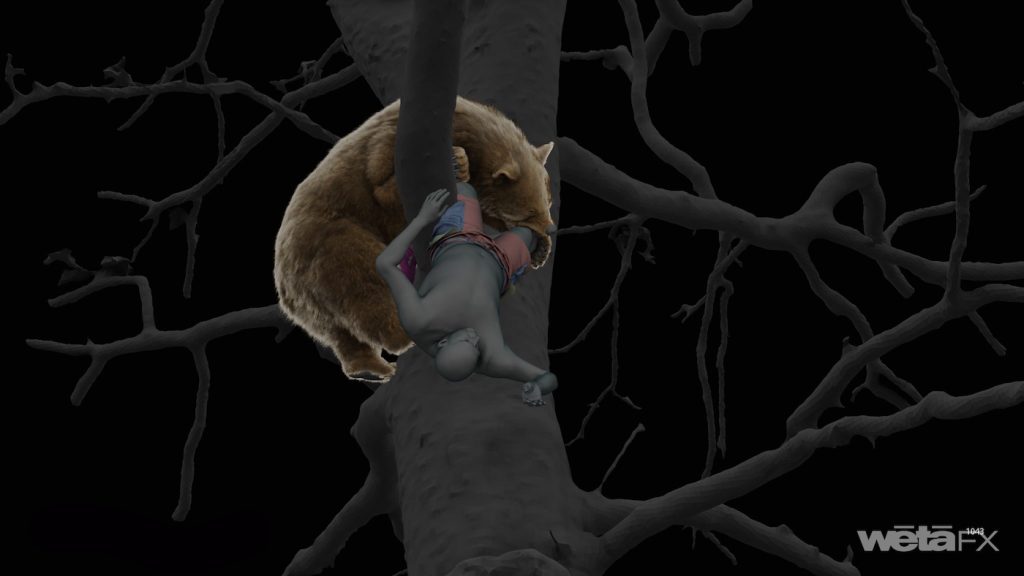
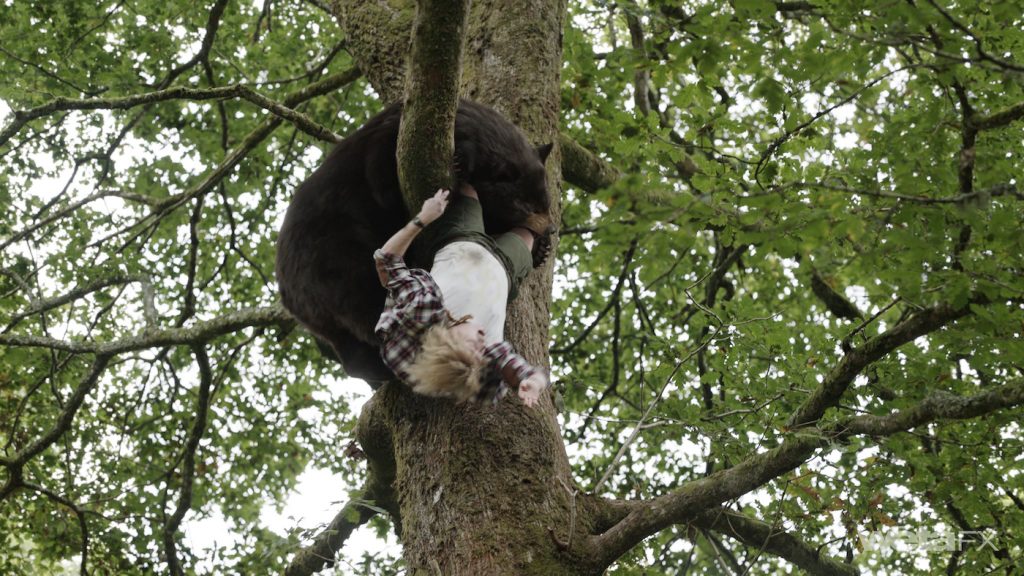
And then Cokey makes that incredibly long slo-mo jump?
Obviously, the jump is not going to happen quite like that, although black bears are very good at jumping. We saw tons of footage of bears jumping between trees or jumping onto someone’s deck.
What about that wild sequence where Cokey’s on her back pushing herself across the ground?
There’s ample footage of bears rolling around scratching their backs on the ground, although not quite as seductive as Cokey’s doing it. That was Liz’s idea, wanting to show that Cokey was enamored with Eddie. The bear’s high on coke and likes this man in the blue jacket. At one point in time, it was more sexual, with Cokey fully dry-humping him. We were like, “Yeah, let’s not do that; it takes us out of the movie too much.”
You spent a lot of time and energy bringing this movie bear to life. Looking back on Cocaine Bear, what are you most proud of?
For me, the proudest achievement is the team that we put together back home at Wētā FX and the fact that we built this great relationship with Liz. Also, our producer Lily Lawrence was fantastic at managing the process. And having worked now on something really hilarious, we just hope Liz makes a franchise out of it and churns out more coke bear movies!
For more on Universal Pictures, Peacock, and Focus Features projects, check out these stories:
Go Deep “Inside” With Willem Dafoe in Curated Look at his New Art Thief Thriller
“Knock at the Cabin” VFX Supervisor Tommy Tran on Creating an Unnervingly Believable Apocalypse
Featured image: Cocaine Bear, directed by Elizabeth Banks. Courtesy Universal Pictures.



